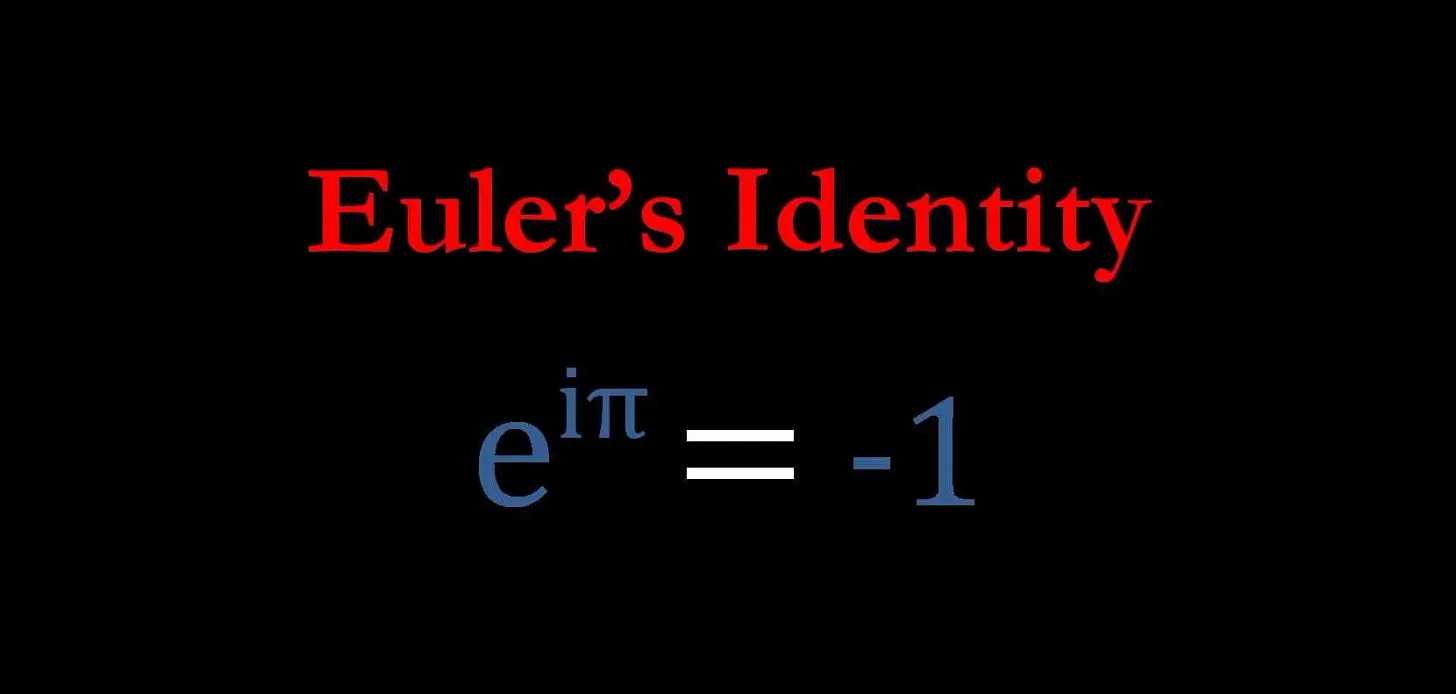Explaining The Beauty Behind Euler's Identity : e^iπ = -1
Most people with an interest in mathematics have heard of this identity, but in order to fully appreciate it, you need to understand what it means. After reading this, you will.
First, let us understand the exponential function e^x. The best way to do this is by understanding its properties.
Perhaps the most important property of e^x is its derivative (and remember, e^0 = 1)
If we introduce a constant to the exponent, denoted as 'e^(2t),' the chain rule informs us that the derivative is now twice the original function. Therefore, at any point along the number line, instead of directly associating a vector with the corresponding number, you would first double its magnitude and then attach the vector.
If f(x) = e^2t, then f’(x) = 2e^2t
Moving so that your position is always e^2t is the same thing as moving in such a way that your velocity is always twice the value of your position. The implication of that ‘2’ is that our runaway growth feels even more out of control.
If we consider a negative constant, like -0.5, your velocity vector consistently equals -0.5 times your position vector. In practical terms, this implies flipping the vector 180° and scaling its length by half. By moving in a manner such that your velocity consistently aligns with this inverted and compressed version of your position vector, you would travel in the opposite direction, gradually slowing down through exponential decay toward 0.
Now then, what if that constant was ‘i’, the imaginary unit (∈ ℂ).
If your position was always e^it, how would you move as the time ‘t’ ticks forward? The derivative of your position would now always be ‘i’ times itself, and multiplying by ‘i’ has the effect of rotating numbers 90°. And so, as you might expect, things only make sense here if we start thinking BEYOND the number line into the ℂomplex plane.
Before delving into the possibly illogical computation of e^it, it's evident that for any position it yields at a given 't,' the velocity at that time will be a 90° rotation of the position. When visualising this for all potential positions, it forms a vector field, and as is customary with vector fields, we scale things down to… well, prevent confusion.
From the initial position, a unique trajectory exists wherein the velocity consistently aligns with the vector it traverses—a 90° rotation of the position. This trajectory corresponds to circumnavigating a circle with a radius of 1 at a speed of 1 unit per second. After π seconds, the traversal covers a distance of π. Consequently, we deduce the identity: e^iπ = -1.
And there we are, now you and I both understand Euler’s identity or rather, how it works despite how immoral it might feel to raise ‘e’ to the power of ‘iπ’…
Extra knowledge:
If you’re interested:
After 𝜏 (tau) seconds, you’ve gone full circle, so, e^i𝜏 = 1. And more generally, e^it equals a number that’s ‘t’ radians around this unit circle in the ℂomplex plane.










